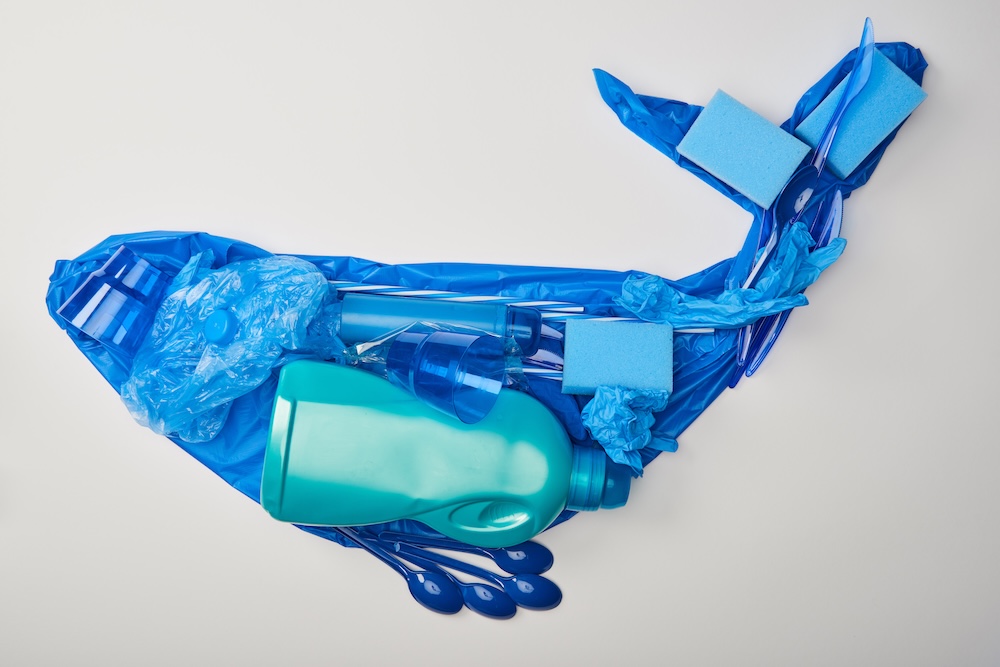When we talk about ocean plastic, the image is often abstract—a swirling gyre of garbage far away. The reality is far worse. Our trash isn’t just floating aimlessly. It’s being eaten, lodged in throats, tangled around fins, and slowly killing marine life in every ocean on Earth.
From whales to seabirds, turtles to fish, animals are swallowing our waste because it looks, smells, or moves like food. The tragedy? The most common items are things we handle every single day without thinking.
1. Plastic Bags
Why animals eat them: Floating bags mimic the movement of jellyfish, a favorite food for turtles and some fish.
Impact: Bags can block intestines, cause starvation, or suffocate animals. Sea turtles that ingest just one plastic bag have a 22% chance of dying from it.
Top offenders: Grocery bags, trash bags, thin produce bags.
Stop it now: Bring reusable bags everywhere—no exceptions.
2. Balloons and Balloon Strings
Why animals eat them: Deflated balloons resemble squid or jellyfish.
Impact: Balloons are among the deadliest plastics for seabirds—even a small piece can cause fatal gut blockages. Ribbon and string entangle flippers, wings, and beaks.
Top offenders: Party balloons, balloon arches, promotional balloon releases.
Stop it now: Use biodegradable decorations—ribbons and balloons are not “harmless fun” when they kill wildlife.
3. Fishing Gear: Nets, Lines, and Traps
Why animals eat them: Some species bite at nets to reach trapped prey. Others simply get tangled while swimming.
Impact: Known as “ghost gear,” abandoned fishing nets cause up to 46% of all marine animal entanglements globally. Whales can drown from exhaustion after days dragging tangled gear.
Top offenders: Monofilament fishing line, crab traps, nylon nets.
Stop it now: Support fishing gear recycling programs and ghost gear retrieval efforts.
4. Bottle Caps and Lids
Why animals eat them: Small, colorful, and easy to swallow—they resemble fish eggs or shellfish to many marine creatures.
Impact: Bottle caps have been found in the stomachs of seabirds, turtles, and fish worldwide. They break down into sharp-edged fragments that damage internal organs.
Top offenders: Soda bottle caps, water bottle caps, juice carton spouts.
Stop it now: Choose reusable bottles and refuse plastic-topped drinks.
5. Cigarette Butts
Why animals eat them: Filter fibers can resemble tiny worms or shrimp.
Impact: Cigarette filters leach toxic chemicals like nicotine, arsenic, and heavy metals into seawater, poisoning marine life. Butts are the most littered item worldwide, with an estimated 4.5 trillion entering the environment annually.
Top offenders: Any brand using cellulose acetate filters.
Stop it now: If you smoke, never flick butts—use a portable butt container.
6. Styrofoam Pieces
Why animals eat them: Styrofoam floats and breaks into bite-sized pellets that resemble plankton.
Impact: Foam soaks up pollutants like a sponge, delivering concentrated doses of toxins when eaten. Once ingested, it doesn’t break down in digestive systems.
Top offenders: Takeout containers, coffee cups, meat trays.
Stop it now: Choose reusable containers—many cities are banning Styrofoam for good reason.
7. Food Wrappers and Packaging
Why animals eat them: Smell and residue attract fish, seabirds, and turtles.
Impact: Wrappers combine plastic with aluminum, making them non-recyclable and long-lived in the environment.
Top offenders: Snack bags, candy wrappers, chip packets.
Stop it now: Buy in bulk, avoid single-serving packaging.
8. Microplastics From Clothing
Why animals eat them: Microscopic fibers blend with plankton and are eaten unknowingly by filter feeders like mussels, oysters, and even whales.
Impact: Every synthetic wash releases up to 700,000 fibers into waterways. These enter the food chain, moving up to larger predators—and eventually, us.
Top offenders: Polyester, nylon, acrylic clothing.
Stop it now: Wash synthetic clothes less often, use a microfiber filter or wash bag, and choose natural fibers.
9. Lost Plastic Toys
Why animals eat them: Small, bright, and fish-shaped toys resemble real prey.
Impact: Toys and parts—Legos, figurines, balls—are found in seabird stomachs and along remote beaches.
Top offenders: Beach toys, floating pool toys, small plastic figurines.
Stop it now: Never leave toys at the beach, and choose biodegradable play items.
10. Aluminum Cans and Pull Tabs
Why animals eat them: Reflective and shiny, mimicking fish scales.
Impact: Sharp edges cause internal bleeding; metal can leach harmful chemicals over time. Pull tabs have been found lodged in turtle and bird throats.
Top offenders: Soda cans, beer cans.
Stop it now: Properly recycle and crush cans before disposal.
The Big Picture
Every single piece of waste in the ocean comes from us. It’s not a “marine problem” — it’s a human behavior problem.
Marine life isn’t just “mistakenly” eating garbage. We’ve turned their food sources into a minefield of deadly bait. And until we stop treating the ocean like a bottomless landfill, the cycle will continue.
Final Thoughts
If you’ve ever said “it’s just one bag” or “it’s just one straw,” remember: there are 8 billion of us. That “just one” attitude has already filled the stomachs of whales, turtles, and seabirds with our garbage. This isn’t a guilt trip—it’s an urgent call to stop being careless. Marine life is choking to death on our convenience.









Reader Interactions